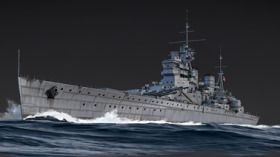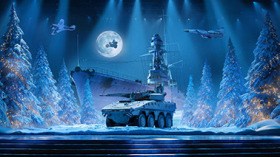
- For PC
- For MAC
- For Linux
- OS: Windows 10 (64 bit)
- Processor: Dual-Core 2.2 GHz
- Memory: 4GB
- Video Card: DirectX 11 level video card: AMD Radeon 77XX / NVIDIA GeForce GTX 660. The minimum supported resolution for the game is 720p.
- Network: Broadband Internet connection
- Hard Drive: 22.1 GB (Minimal client)
- OS: Windows 10/11 (64 bit)
- Processor: Intel Core i5 or Ryzen 5 3600 and better
- Memory: 16 GB and more
- Video Card: DirectX 11 level video card or higher and drivers: Nvidia GeForce 1060 and higher, Radeon RX 570 and higher
- Network: Broadband Internet connection
- Hard Drive: 62.2 GB (Full client)
- OS: Mac OS Big Sur 11.0 or newer
- Processor: Core i5, minimum 2.2GHz (Intel Xeon is not supported)
- Memory: 6 GB
- Video Card: Intel Iris Pro 5200 (Mac), or analog from AMD/Nvidia for Mac. Minimum supported resolution for the game is 720p with Metal support.
- Network: Broadband Internet connection
- Hard Drive: 22.1 GB (Minimal client)
- OS: Mac OS Big Sur 11.0 or newer
- Processor: Core i7 (Intel Xeon is not supported)
- Memory: 8 GB
- Video Card: Radeon Vega II or higher with Metal support.
- Network: Broadband Internet connection
- Hard Drive: 62.2 GB (Full client)
- OS: Most modern 64bit Linux distributions
- Processor: Dual-Core 2.4 GHz
- Memory: 4 GB
- Video Card: NVIDIA 660 with latest proprietary drivers (not older than 6 months) / similar AMD with latest proprietary drivers (not older than 6 months; the minimum supported resolution for the game is 720p) with Vulkan support.
- Network: Broadband Internet connection
- Hard Drive: 22.1 GB (Minimal client)
- OS: Ubuntu 20.04 64bit
- Processor: Intel Core i7
- Memory: 16 GB
- Video Card: NVIDIA 1060 with latest proprietary drivers (not older than 6 months) / similar AMD (Radeon RX 570) with latest proprietary drivers (not older than 6 months) with Vulkan support.
- Network: Broadband Internet connection
- Hard Drive: 62.2 GB (Full client)
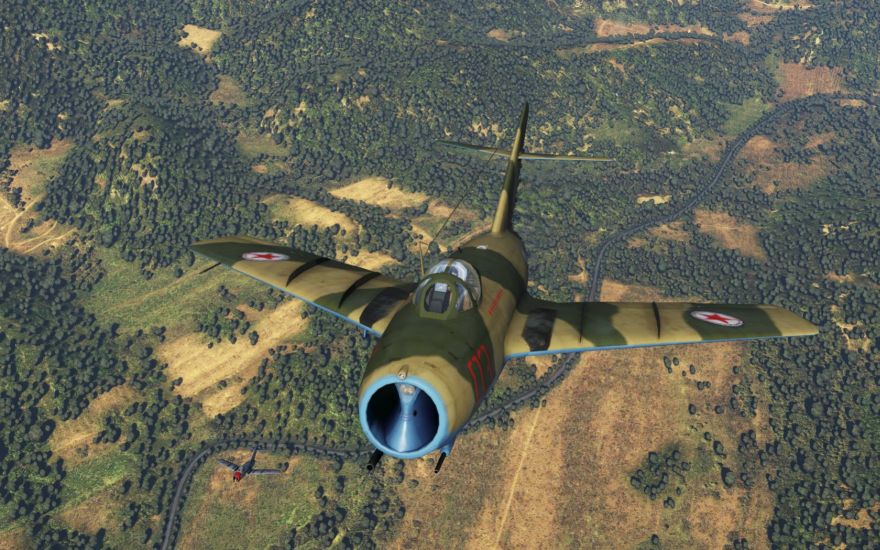
NK MiG-15 Piloted by Maj. Arkady Boitsow while with the 161st IAP, 971st IAD, skin by DrNooooo
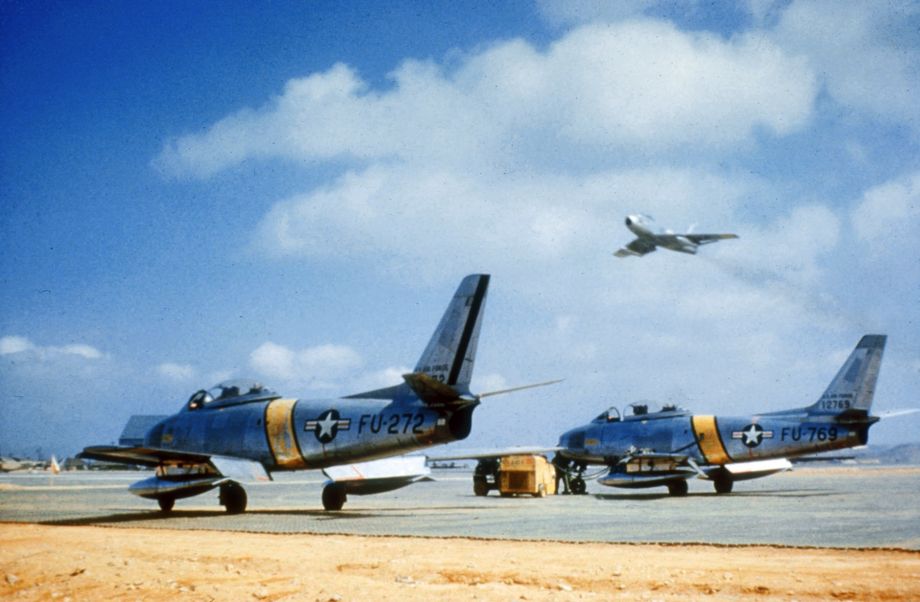 |
F-86 Sabre fighters from the 335th Figher Interceptor Squadron |
On the 25th of June 1950 North Korean forces crossed the 38th parallel of the peninsula into the South, starting the conflict known in history as the Korean war.
Tensions had been building on both sides since the conclusion of the second world war. Korea had long been ruled by its neighbours, most recently, the Imperial Japanese Empire. By 1945 the Japanese Empire had all but fallen, Russia and the United States agreed to form a pincer movement on Korea to attack Japanese forces on two fronts. Once Japan had been dealt with and World War Two concluded, both the Soviets and the USA agreed to divide Korea on the 38th parallel and doctor new established governments modeled on their own.
The North under Kim Il-sung was aided by the Soviets and by 1949 also by Mao Zedong's new Peoples Republic of China whilst the South was formed in a Westernised manor under Syngman Rhee with the help of the US.
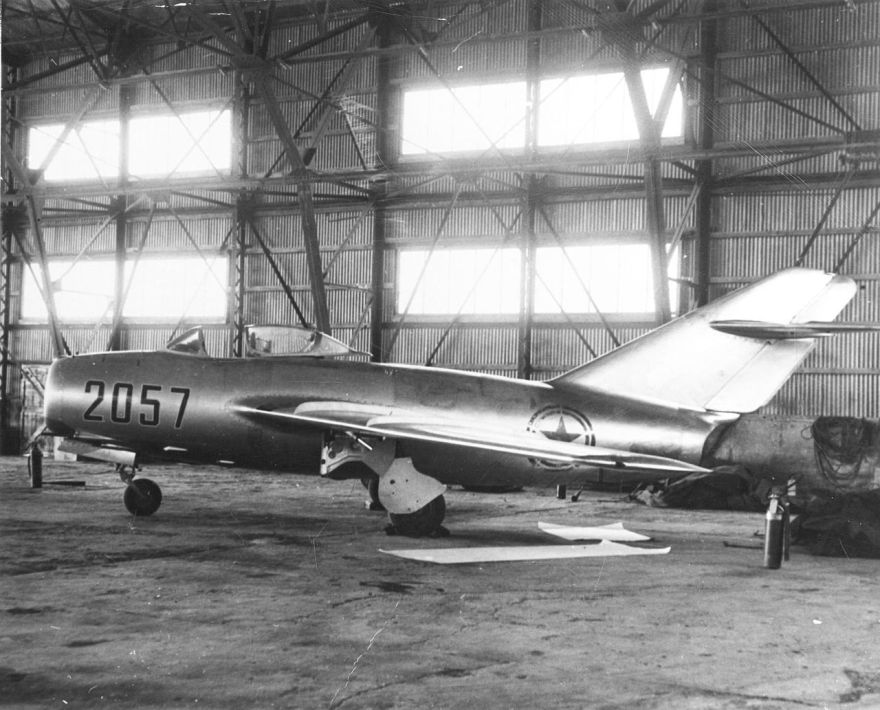 |
MiG-15bis in hangar at Kimpo AB 21 Sept 1953 |
After the Superpowers pulled out in 1947 and both sides of Korea were left on their own, tensions quickly grew between the two sides of the peninsula. Smaller scale “border wars” and minor raids were frequent along the 38th parallel until in June 1950 after visiting Stalin to get approval and with the backing of Mao’s China, Kim Il-sung made the first move by means full military invasion over the South of the border.
The UN nations unanimously condemned the action as that of war, as such, the UN forces of joint nations lead by the US under General Douglas Macarthur joined the conflict on the side of the South.
From an Aviation perspective, the conflict would mark the debut of countless aircraft that would go down in history and further reinforce the reputation of others already seen in combat.
The F4U Corsair, P-51 (Now F-51), A-26 and B-29 would all return in somewhat later models than their Second world war versions, complemented by the new jet age fighters. Aircraft such as the F-80, F9F and F-84 were also operated alongside the pinnacle of piston era aircraft in the form of the Hawker Sea Fury and F8F Bearcat. North Korea and China were both supplied with some of the USSR’s key aircraft such as the Yak-9, Tu-2 and IL-10 amongst others.
Perhaps most famously, two very specific jet fighter aircraft made their debuts and would shape the course of combat aviation for years to come. The Russian MiG-15 came as a massive shock to the UN forces when both North Korea and China revealed the aircraft. However the challenge that temporarily swayed air power in the North’s direction was soon counteracted by the USA’s own swept wing fighter: The F-86 Sabre.
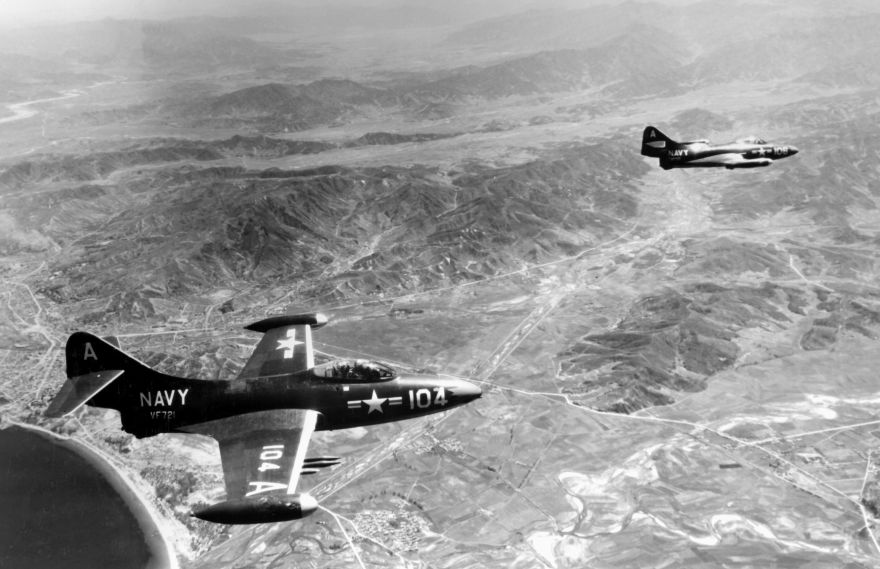 |
F9F-2B Panther jets flying over Wonsan |
After a change of leadership on both sides of the superpowers, amongst other factors, a ceasefire agreement was finally reached and the war would come to its conclusion on July 27th 1953. Whilst little was gained on any side of the conflict, aviation and air combat would never again be truly the same.
The War Thunder Team


